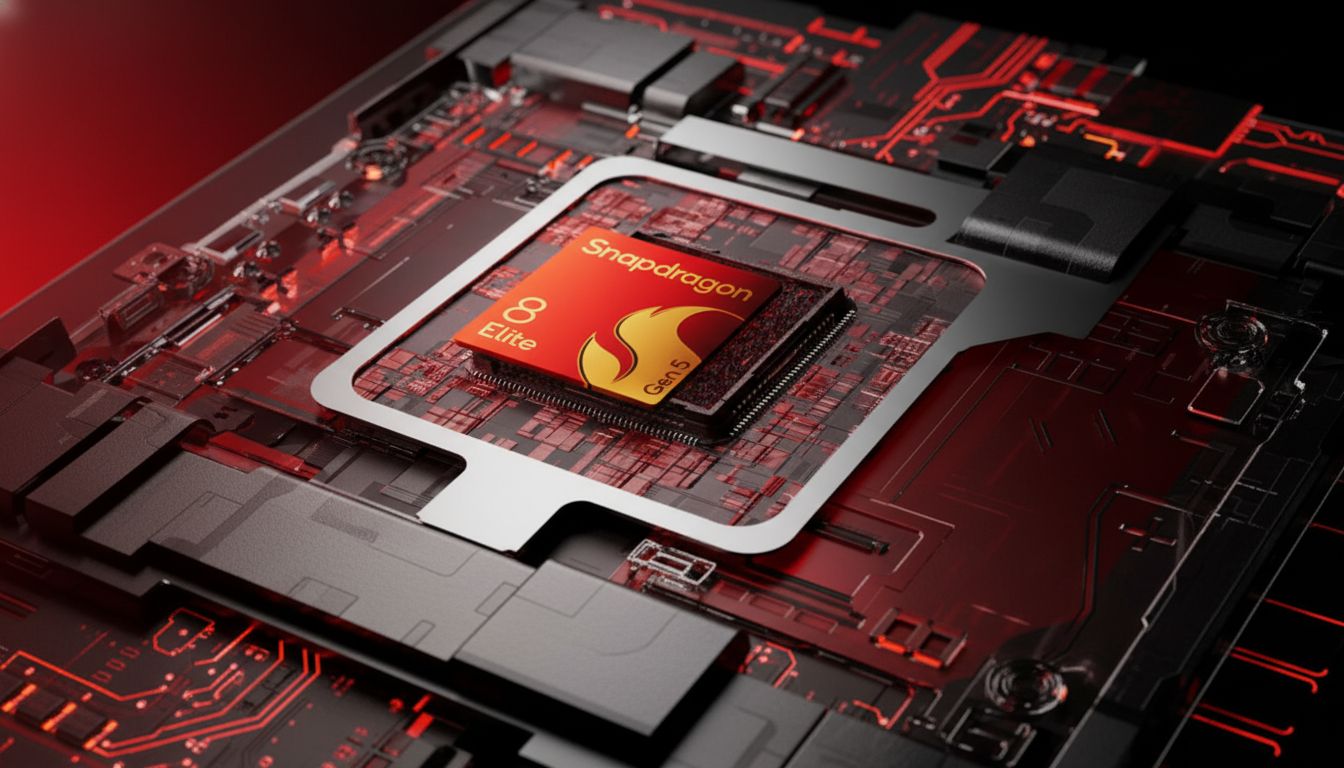A fresh leak has laid out core stats for the forthcoming Snapdragon 8 Gen 5 from Qualcomm, the non-Elite variant aimed at premium phones that fall short of the best on the market. The chip would ride TSMC’s brand-new and more powerful N3P 3 nm node, maintain Qualcomm’s own Oryon CPU cores, but dial back clocks compared to the Elite to balance performance, thermals, and pricing.
Key CPU and GPU details from the leak
Based on well-known informant Digital Chat Station, the Snapdragon 8 Gen 5 will have a 2+6 Oryon CPU layout: specifically, two Prime cores clocked up to 3.8 GHz and six performance cores running at 3.32 GHz.

This is an echo of the core pattern seen on the Elite chip but at a slower setup, a clear indication of deliberate binning to support many device models and price tiers.
The GPU picture is muddy. While the company has advertised other generations of Adreno, early test numbers quoted in the leak show graphics performance lagging the Elite variant. It’s a little early to consider this inferior; Qualcomm habitually refines GPU drivers and power targets at the early stage. Nevertheless, it hints that the 8 Gen 5 will focus on efficiency and sustained output over peak scores, which suits slim chassis and constrained thermal budgets.
On-device AI and imaging are expected to remain stable, but the leak proposes no comprehensive upgrades to the NPU and AI-ISP over the Elite. If true, OEMs may push software enhancements and feature improvements rather than automatic silicon alteration to create camera and AI differences.
Built on TSMC N3P: What that signals
N3P is TSMC’s latest 3 nm iteration, promising modest efficiency and performance gains over N3E, which powered last year’s top silicon. The move suggests Qualcomm is chasing better battery life and cooler sustained performance without a radical redesign. Mature nodes typically bring improved yields, so a non-Elite flagship on N3P could be attractive to OEMs seeking predictable supply and consistent thermals.
In practical terms, users should expect smoother sustained workloads rather than dramatic one-off benchmark spikes, such as:
- Social video creation
- Night-long messaging and maps
- Extended gaming sessions
That approach aligns with what premium buyers increasingly value: responsiveness that holds up across hours, not seconds.

Where it fits in Qualcomm’s stack
The 8 Gen 5 looks positioned between the Elite and the “s” tier, effectively a non-flagship flagship for sub-$800 devices and so-called flagship killers. By reusing the Oryon architecture at lower clocks, Qualcomm can deliver near-flagship CPU responsiveness while saving power and silicon cost—an approach we’ve seen resonate in markets where value flagships have grown in share.
This also gives OEMs room to invest in differentiators—better cameras, brighter displays, or faster charging—without the thermal headroom challenges that accompany fully unleashed flagships. Expect brands to pitch this chip as the sweet spot for daily speed and endurance.
Early performance expectations and trade-offs
If GPU performance does end up below the Elite, the true test will be sustained gaming. A slightly slower peak GPU that holds a higher average over 30 minutes can feel “faster” than a hotter, throttling flagship—and, crucially, is less likely to decrease overall gaming performance over time. Either way, pro gamers who want to hit the highest FPS possible in ray-tracing demos will still gravitate to Elite-class hardware.
As for AI, even a same-tier NPU can leap in real-world capability with the right software. We’d expect OEMs to promote on-device generative features and camera tricks more easily—but this is more about model efficiency and memory bandwidth than raw NPU TOPS alone. The camera pipeline, with its more mature ISP tuning, could ultimately be a greater PR win than the NPU, in the right brand’s hands.
Devices to watch
The leaker stops short of sharing a launch timing, adding only that manufacturers are finalizing designs. OnePlus was rumored to debut the chip in the Ace series before matching a rival’s cost and opting for Elite-class chips. A Vivo S-series device has been speculated, with one source suggesting it launches outside China under a different name. While consumers can enjoy the transparency, keeping roadmap ambiguity until the fateful day helps manufacturers keep plans hidden from competitors.
The bigger roadmap picture
Separate chatter indicates an additional Elite variant through Samsung, as has been previously reported, arriving on a 2 nm process in mid-2026. However, this Elite generation, like its predecessor, will remain with TSMC. Diversifying across foundries gives Qualcomm flexibility across capacity, price, and power envelopes—a vital source of strength, considering AI and the camera pipeline will be the defining features of future device generations.
In conclusion
The Snapdragon 8 Gen 5 seems like a carefully planned bet for the wider premium tier, with CPU grunt near flagships, reasonable GPU objectives, and a new 3 nm basis. Phones based on it are unlikely to sell you on raw bragging rights and will instead focus on balance and stamina, assuming the leak holds.

